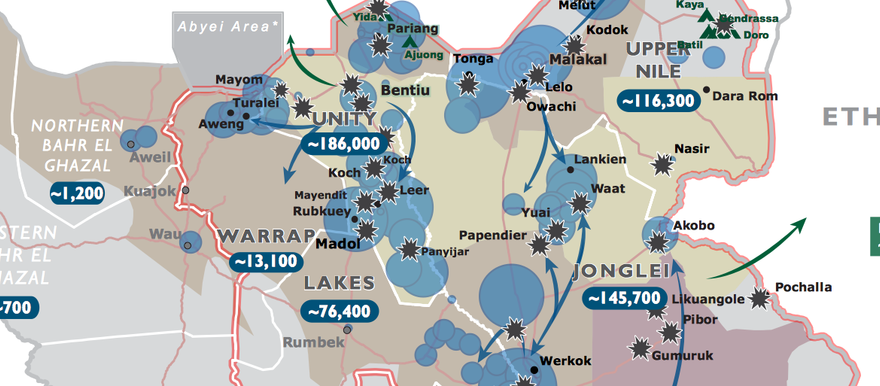World Food Programme starts airdrops early in South Sudan

Insecurity and warfare in South Sudan have forced the UN World Food Programme (WFP) to begin airdrops to displaced populations in remote areas before the start of the rainy season.
The effort comes after reports of ‘alarmingly high rates of malnutrition’ among South Sudanese refugees arriving in Ethiopia, as well as in inaccessible regions of South Sudan.
Areas that would normally still be accessible at this time of year are cut off by conflict, even before rains make the roads there impassable. Targeted areas include Ganyiel, Maban and other areas of Jonglei, Unity and Upper Nile states.
“We are in a race against time to get assistance to people who are in critical need in places we simply haven’t been able to reach by road or river,” said WFP Country Director Chris Nikoi in a statement on the agency’s website yesterday.
He added that the UN organization had already planned to make airdrops to some areas during the rainy season, but now faced “more difficulties than envisioned,” forcing them to deliver more food by air than planned.
Two rounds of airdrops on Tuesday delivered enough cereals for about 8,000 displaced people for 15 days in the town of Ganyiel in Unity state, following a trial run of airdrops in recent days in Maban County in Upper Nile state, according to WFP, adding that at least nine other locations will also be targeted.
Normally WFP trucks food to various warehouses throughout the country during the dry season – a process referred to as ‘pre-positioning’ – then relies on non-governmental organizations to carry out distributions locally.
Compared to this standard process, the use of airdrops dramatically drives up the cost of the aid operation, though it is not yet disclosed by how much. In an update on 13 March, the UN coordination agency in South Sudan said they are appealing for $44.4 million for logistics costs for aid operations in the country, about half of which has already been funded by donor nations.
Photo: A map of displacement in northern South Sudan, 14 March (USAID)